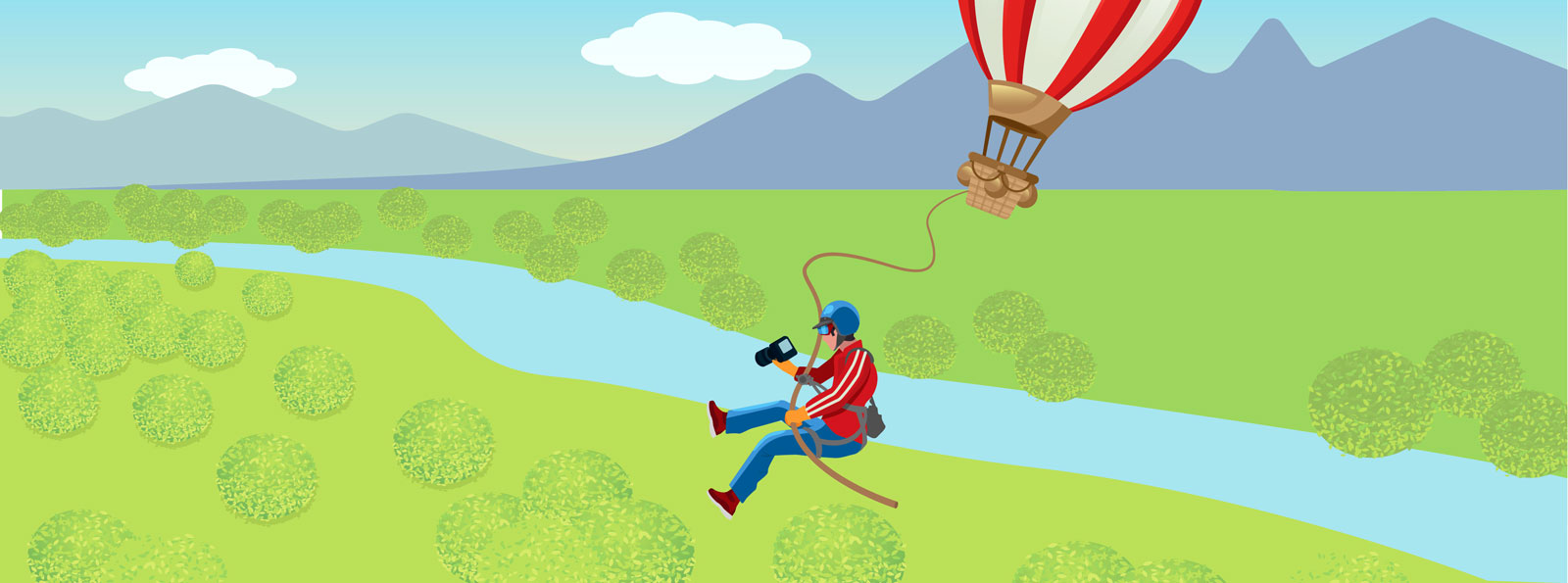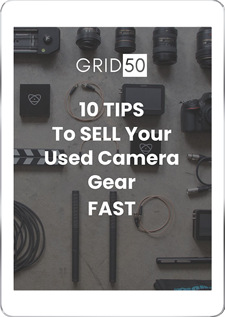The Complete Guide to Aerial Photography
In this guide, we break down the basics of aerial photography to help you understand the genre and to get you ready to start working in the field.
As the photography world continues to advance with increasing technological innovations, the genres within the world are evolving. Aerial photography is quickly adapting within the consumer level, as drones are becoming more accessible for the masses, which means the possibilities for aerial photography are limitless.
Breaking into the world of aerial photography may seem a bit daunting, especially for someone who is typically used to shooting on land with a handheld camera, but the genre is full of challenging potential for anyone interested enough to jump into it.
Our guide walks you through the basics of aerial photography, provides tips for starting out, and has a helpful list of recommended gear to help make equipment purchases easier.
Read on or use the links to below to “jump” to each section:
- What is Aerial Photography?
- Aerial vs. Drone Photography: What’s the Difference?
- Types of Aerial Photography
- How to Get Started
- Aerial Photography Tips
- Recommended Camera Gear
What is Aerial Photography?
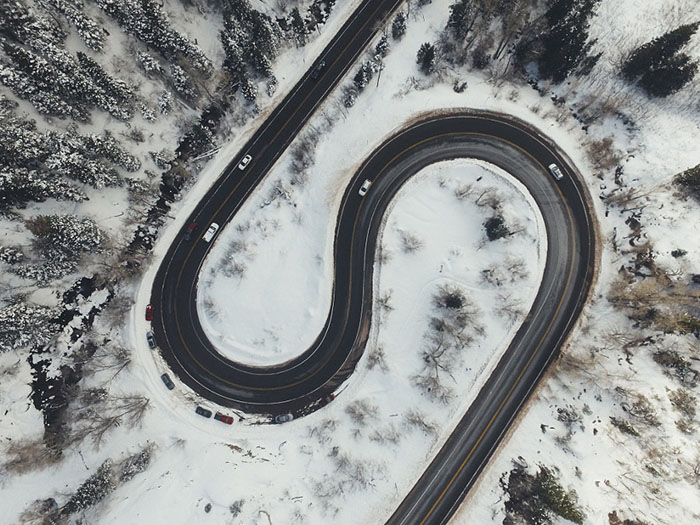
Image via ISO500px
Simply put, aerial photography is photography taken from above by aircraft (like planes and helicopters) and other flying objects (like drones). Aerial photography is a broad genre that has undergone a lot of progress in recent years due to new technological advances, like the development of consumer-friendly drones, that have helped make the genre more accessible.
Aerial photography can be done for a variety of reasons including cartography, landscape planning, archeology, movie production, environmental studies, power line inspection, surveillance, marketing, and artistic projects. Since aerial photography can be used for many situations, it is a versatile way to turn your hobby into a business endeavor.
With so many opportunities to utilize aerial photography, understanding the basics of the genre can be a great way to begin making money off of your aerial work. With drones becoming easier for the consumer level, getting the right equipment and gaining experience is the best way to get started in aerial photography.
Aerial vs. Drone Photography: What’s the Difference?
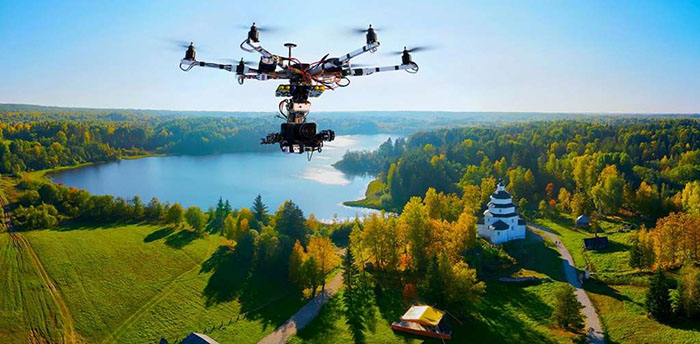
Image via Adorama
Drone technology has advanced quickly in recent years making it easier than ever for consumers and professionals to access this equipment. While aerial photography does not have to be done by drones, the use of these cameras has allowed for exciting developments within the genre.
The easiest way to understand the difference between drone photography and aerial photography is to view drone photography as a subgenre. With the increasing use of drones, drone photography and aerial photography are quickly becoming interchangeable, but it is important to know there is other equipment that can be used to achieve the same results.
Tyes of Aerial Photography
Aerial photography has many commercial uses, as well as artistic potential for personal projects. While aerial photography is a genre within itself, it does expand into other genres like landscape photography, nature photography, sports and action, and real estate photography. The possibilities for aerial photography are pretty abundant, so it is easy to find an area that aligns with your interests.
Landscape Photography
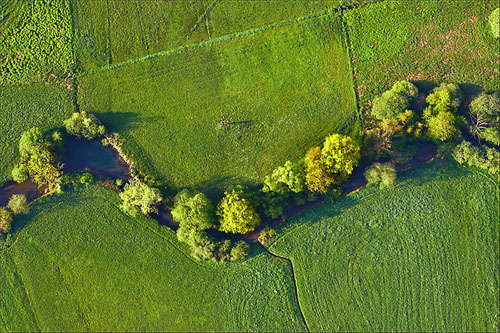
Image via PictureCorrect
Taking pictures of landscapes in an aerial view can be used for many projects like land surveying, landscaping, and cartography. This subgenre is a great way to find gigs that may pay for your aerial work.
Landscape photography, especially with aerial photos, can also fall into nature photography, as this combination is a great way for adventure-seeking photographers to capture natural and exciting scenes like volcanos, oceans, mountains, and waterfalls.
Filmmaking and Videography
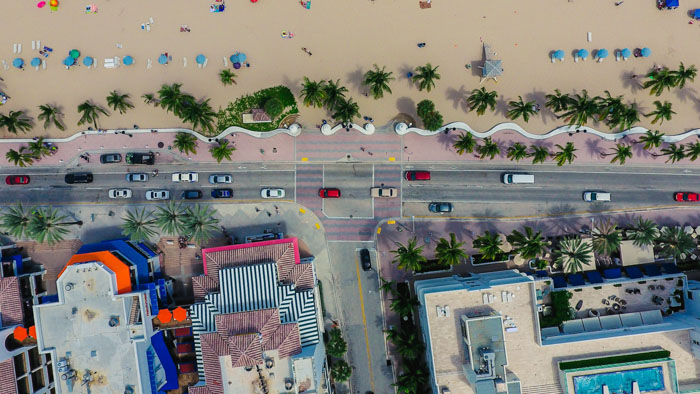
Image via Expert Photography
A common use for aerial photography is in cinematography. Aerial footage can be used to set the scene for movies and short films, and many companies can use aerial footage in their marketing materials.
Real Estate Photography
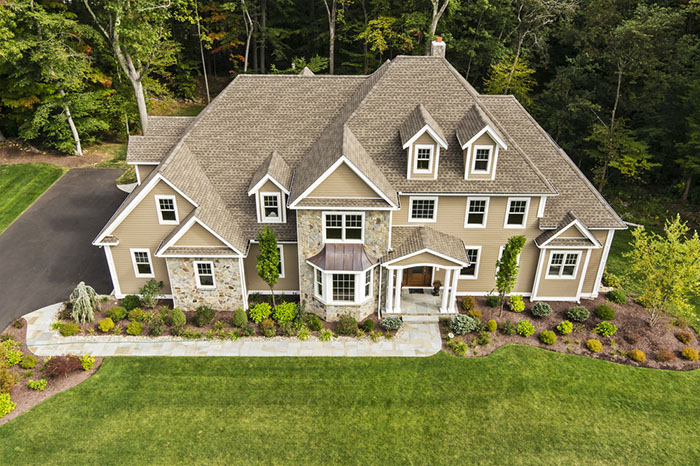
Image via DronesEtc
Another way to turn your aerial work into a side business is through real estate photography. Aerial pictures can play a critical role in capturing the full property of a listing, and it can be a great way to step up any real estate listing.
Sports and Action Photography
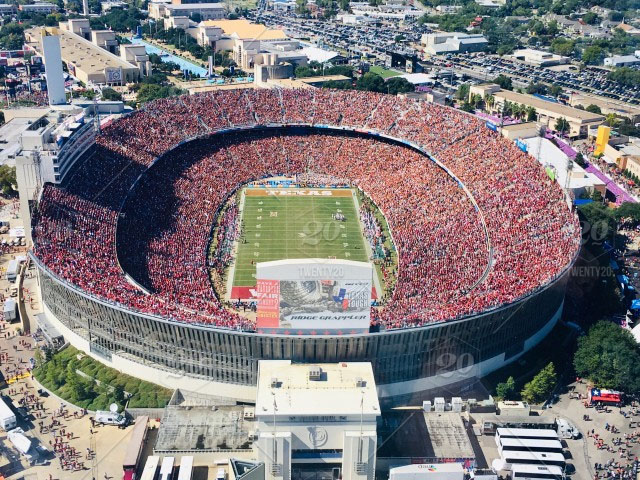
Image via Twenty20
Another genre reaping the benefits of drone usage is sports and action photography. With the use of drones, sports photographers can capture impressive pictures at all angles, especially of aerial sports like skiing and snowboarding. This can also be useful for photographers wanting to capture large scale events like NASCAR races and football games to showcase the entirety of an event.
How to Get Started in Aerial Photography
Like all types of photography, aerial photography requires an investment of time and resources to get started. First, do your research to see which types of aerial photography seem interesting and doable in your areas. By knowing which types of aerial shoots you will want to work on, you can start to narrow down which equipment will best fit your needs.
Once you’ve decided on the best gear for you (we’ll go more in-depth about different types of drones, or you can jump ahead to read more), you will want to practice with your equipment to get comfortable handling it.
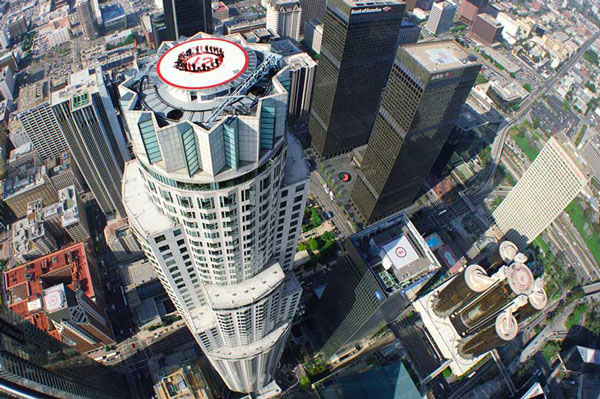
Image via Photography Tricks
Start by testing out your drone or gear in large open areas, like parks or open fields, to get a handle on how to operate and use your equipment. Practicing this way will let you test out the speed, angles, and drone handling, so you will feel comfortable doing a shoot.
Don’t forget to check out the rules and regulations for drone usage in the areas you plan to be shooting or practicing in. Since aerial photography has become even more popular with drone usage, many areas have begun to draft rules and regulations around their usage.
Starting with recreational use (photography by drones that you are not being paid or commissioned to do), the rules are pretty simple, but they get a bit more complicated for commercial use.
Check out the guidelines around registering your gear, and make sure to read local rules frequently to stay up-to-date on any possible changes to regulations.
Quick Tips to Follow:
- Be sure you can always see your drone, and keep it within your line of sight.
- Know the maximum permissible height for the area you are shooting in, and don’t go above it.
- Avoid flying your drone in overcrowded areas. Public spaces, such as parks, are fine, but respect the space of others.
- Just as you would with other types of photography, respect the privacy of others and do not take pictures of private property without permission.
- Avoid airports and no-fly zones.
Tips for Getting the Best Aerial Shots
Aerial photography can produce stunning results with practice and attention to detail. Like all photography, at its core, aerial photography is an art form, and it requires an understanding of lighting, angles, and equipment to produce high-quality images.
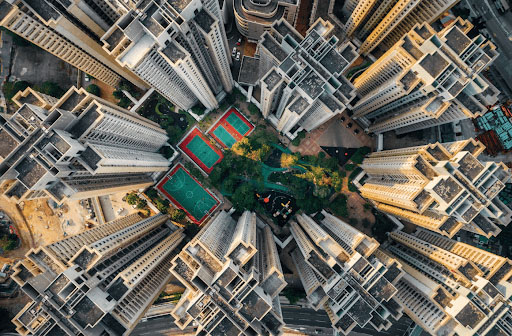
Image via Hudson
Familiarize Yourself with Your Gear
Any gear you use for aerial shoots will have pros and cons, especially if you are used to still photography with a DSLR camera, so understanding how to properly handle your equipment will make a huge difference in your image results.
All drones have limitations, and understanding these limits, as well as finding the best ways to work around them, will help you step up your game. Be prepared to make adjustments to your technique, as working with drones is very different than working with a typical DSLR camera. Doing your research and practicing with your equipment will make a big difference.
Take Advantage of Auto Mode
You may be used to working in manual mode on your DSLR, but don’t be afraid to utilize the auto mode on your drone, especially when you are first starting out. Since drones are operated remotely, the live view on your device may not be an accurate depiction of what you are actually taking pictures of, so using your auto mode can help produce quality images while you are getting the hang of things.
Work With Height
Your equipment may be able to reach exceptional heights, but that may not be the best approach for every shoot. Try lower heights to switch up the angles and perspectives of your photos, and only go as high as possible when trying to cover the most area in your shots.
Plan Your Shoots
Almost all aerial photography is going to be done outside, so planning your shoots around the natural lighting of the day will help you capture the best images. Work with the sun and other weather conditions when shooting aerial images, and think ahead to plan what kind of weather will be best to capture your subject.
Composition Matters
Whether you are using a drone or doing in-person aerial shoots from a plane, the composition of your photos will make all the difference. Pay attention to the landscape and subjects you are trying to capture, and focus on finding the best composition to portray them. If you are planning on working with landscape shoots, study the area beforehand, so you can be knowledgeable when shooting.
Recommended Gear
While drone photography is the most consumer-friendly option for aerial shooting, there is equipment that works well with other forms of aerial photography like shoots done from planes and helicopters.
If you plan to conduct aerial shoots from a plane or helicopter, rather than working with a drone, the best lenses to take are a 24-70mm, ultrawide 16-35mm, and a telephoto lens. The telephoto lens will allow you to get close to the subject or landscape that you are shooting, while also capturing fine details.
Bringing along extra camera straps, and safe storage for any gear you are not using is a good idea, since shooting from a plane or helicopter can be a bit tricky. Dress properly for the height as well.
The Best Drones for Photography
The market for drone photography is constantly advancing, which means there are several great choices that can fit the needs of whatever type of aerial photography you wish to do. With so much versatility in the market, the most important factor when choosing which drone is best for you is picking one that fits your shooting needs.
DJI MAVIC 2 ZOOM
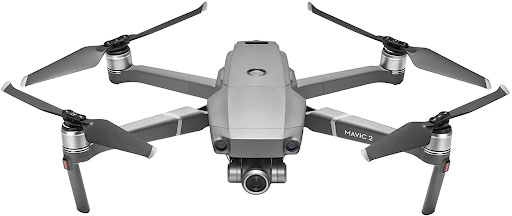
This extremely adept drone is powerful, but portable, which makes it great for any action-loving photographer who wants to be able to easily carry their equipment during shoots. The DJI Mavic 2 Zoom has quiet propellers and powerful motors that can withstand high winds just as well as a heavier model.
With high maximum speed and optical zoom features, this drone is a great choice for any photographer who wants to spend a little bit more for a quality piece of portable equipment.
Power Vision Power EggX Wizard
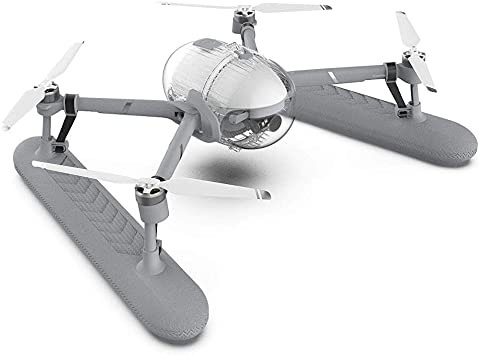
This drone is waterproof and it can land on water, which makes a great choice for photographers who plan on using their drones in tough weather conditions. The Power Vision Power Egg X Wizard can withstand rain and is perfect for outdoor environments, like the beach or waterfalls.
DJI Mavic Mini
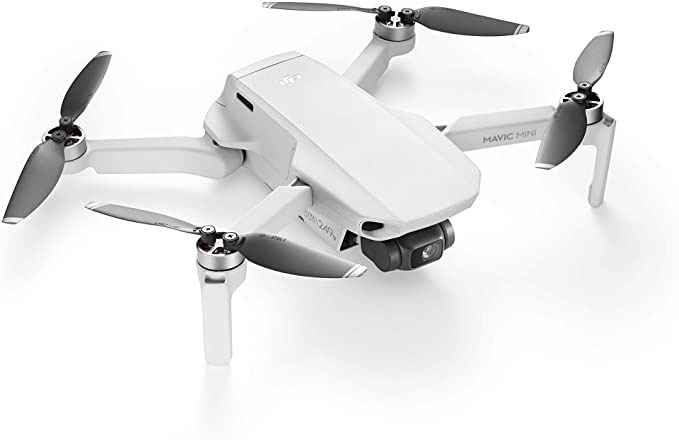
This is the perfect drone for beginners who are ready to get started in aerial photography, but don’t want to spend money on a pro-level drone. The DJI Mavic Mini is portable, easy to use, and has a 3-axis camera stabilization that creates smooth footage during usage. This drone is marketed towards vlogging culture as well due to its ‘Quickshots’ feature that using preprogramming to help get the perfect shot for social media.
Parrot Anafi FPV
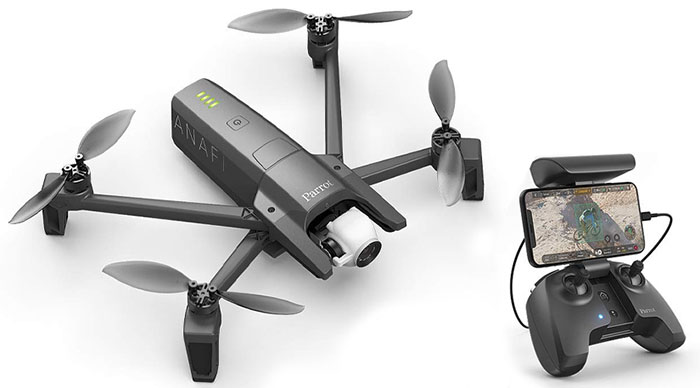
Image via Dronesvilla
The Parrot Anafi FPV is great for travel photographers who don’t want to lug around heavy equipment. This drone is extremely portable, lightweight, and has a folding controller to make traveling with it even easier. On top of its convenient physical design, it delivers quality images at an affordable price.
Ryze Tello
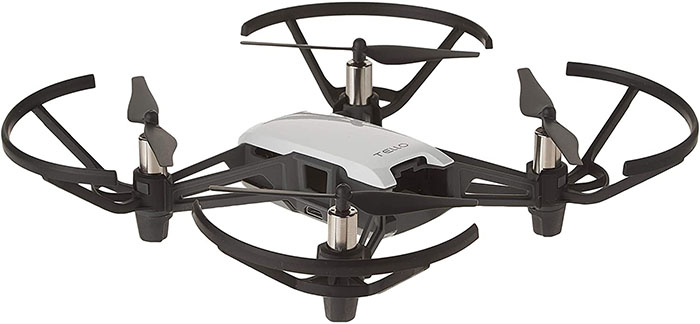
This is the most affordable drone on the list, and it is a great piece of equipment to start with at such a low price point. Called a microdrone, the Ryze Tello is operated solely through a smartphone, and it allows for basic programming to help with customization.
Check out the Grid50 marketplace for gear that will work best for aerial photography!
Final Thoughts
Aerial photography is an exciting genre with an abundance of possibilities. Take advantage of the opportunities that consumer-level drones bring, and invest in equipment that will help bring your vision to life.
Start by practicing your aerial skills and finding your niche within the genre, and don’t be afraid to expand your skills into a professional setting, as aerial photography can provide lucrative opportunities in the real estate and landscape photography scenes.
Don’t forget to keep up with regulations and frequently check the drone rules in your area, as the world of consumer drones expand, so will the rules and regulations surrounding them!
